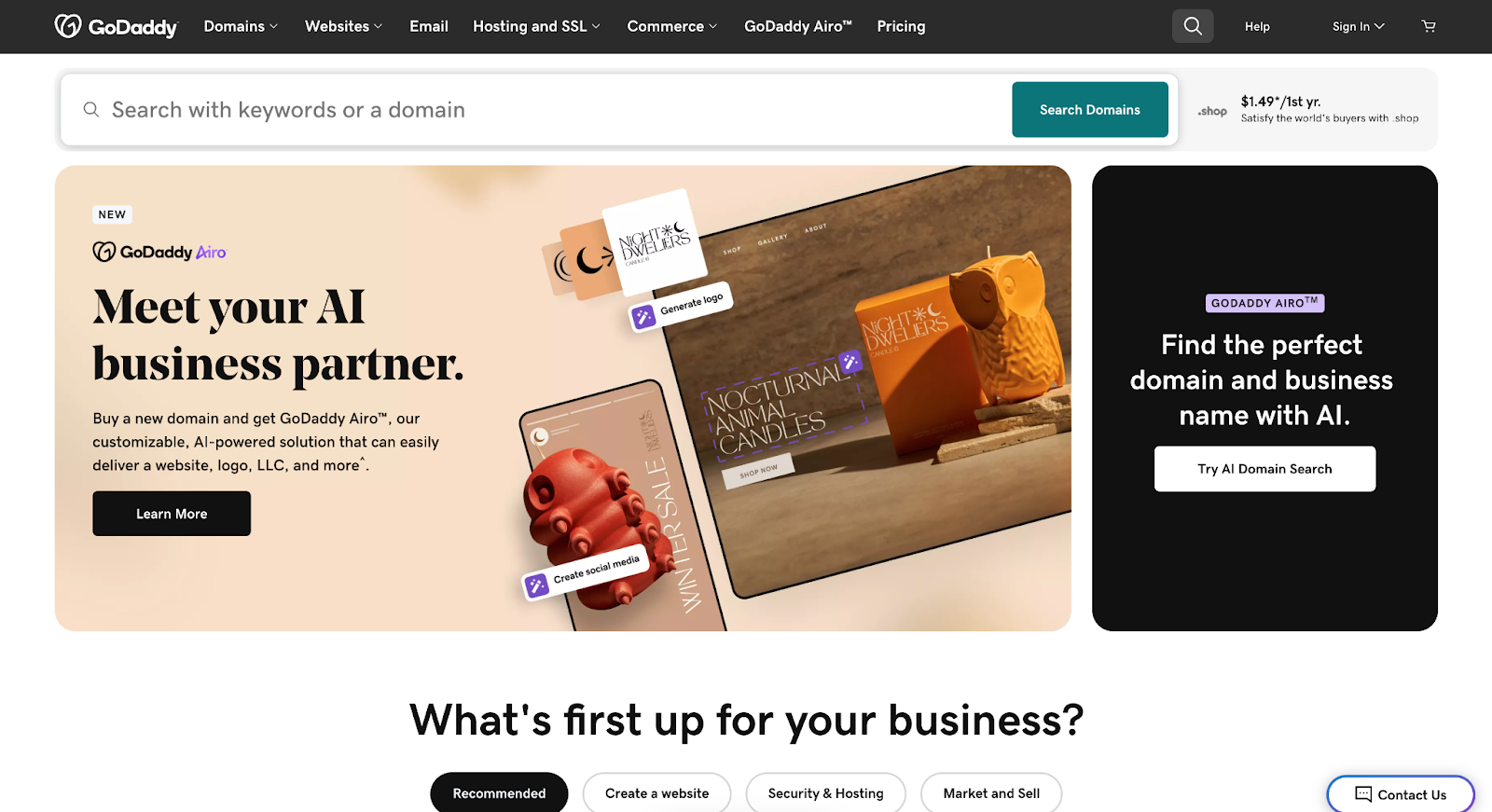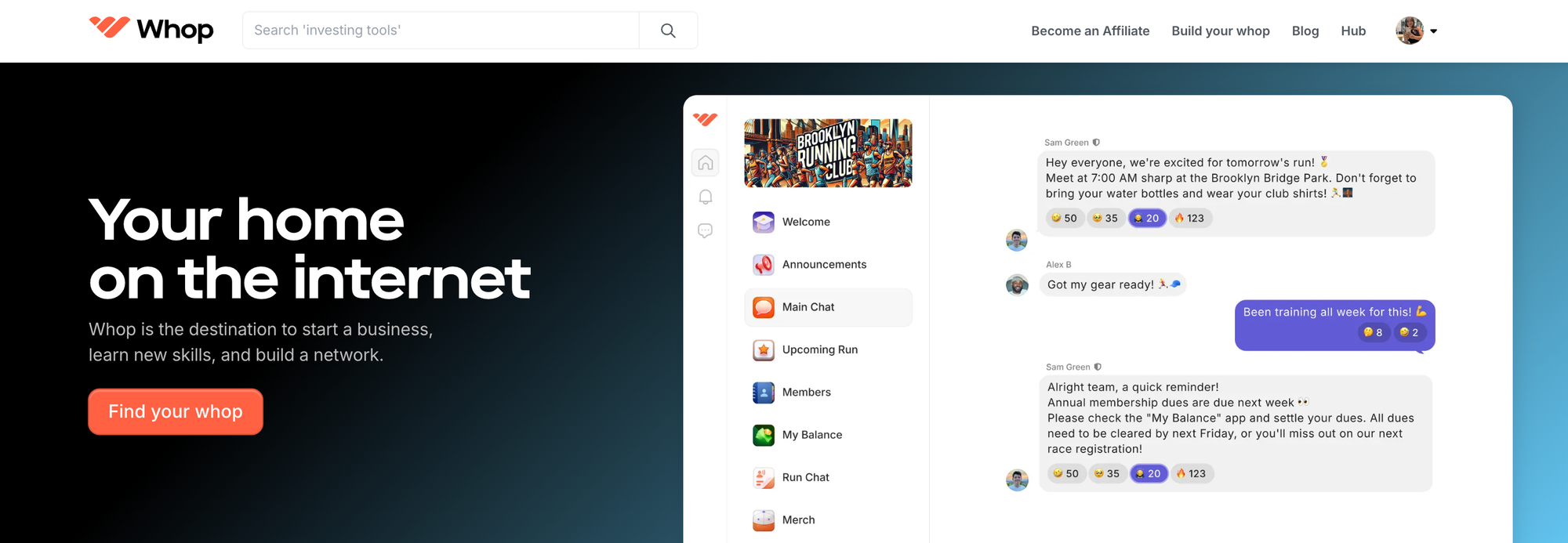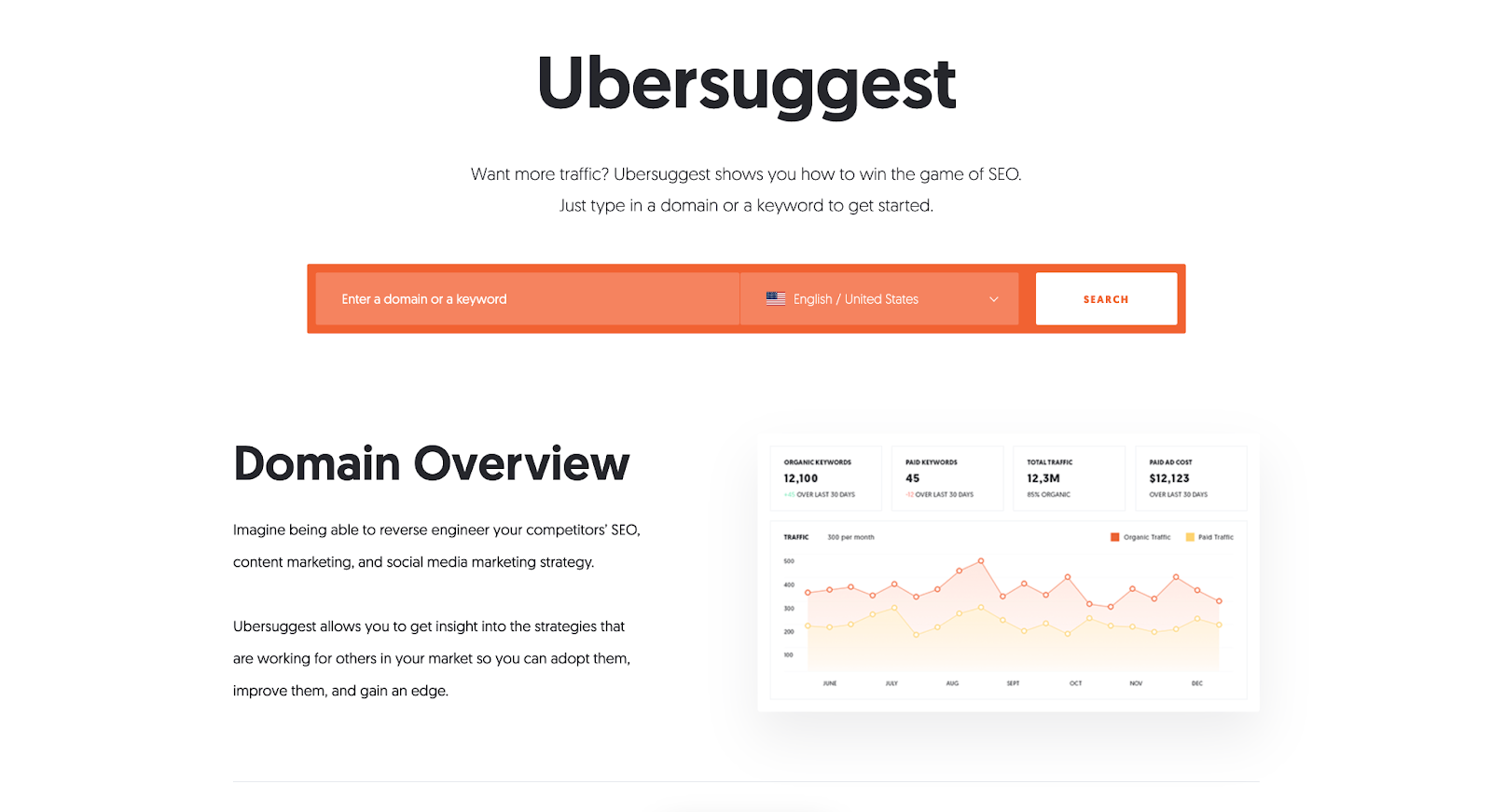All businesses should have a website, even if you only operate from a physical premises. Read this article to understand why and how you need a website to sell your products.
Key takeaways
- 71% of companies have a website today, making online presence essential for business success.
- Online businesses operate 24/7 without geographic limitations, reaching global audiences constantly.
- Digital products offer extremely profitable models with low production costs and infinite sales potential.
- Google prioritizes mobile-friendly and fast-loading websites in search results for better SEO rankings.
- Regular monitoring with Google Analytics helps track traffic, bounce rates, and conversion performance.
As shopping has evolved, almost every company has created its own website. Whether to sell products, give information, or provide more convenient customer service, 71% of companies have a website today
This shows how important and effective this digital “billboard” has become for conducting business. A good website serves as the gateway to your brand and it can attract new customers, build loyalty, and provide excellent service.
So, if you have a business or are thinking about setting one up to sell products online, we’ll discuss everything you need to know about websites: The advantages, why your business should have one, and, of course, how to make a website for selling products. Keep reading to learn more.
The advantages of selling products online
Selling products online is an efficient business model that enables companies of all sizes to reach a larger, often global, audience regardless of their geographic location. Unlike physical stores, an online business is "open" 24/7, allowing customers to shop at their convenience regardless of time zones.
Other advantages of selling products online are:
Lower operational costs
Compared to having a physical place, operating an online business eliminates many costs such as rent, utilities, and staff. Additionally, processes like inventory management, order processing, and customer support can be automated, reducing labor expenses.
And depending on your business, you don’t even need to worry about having a physical inventory of products. Selling digital products, such as digital artwork or books, is an extremely profitable model with low production costs. Once they’re made, digital products can be sold indefinitely.
Flexibility and scalability
Selling online enables you to swiftly adjust to market trends and customer demands. You can easily add or remove products, run promotions, or change pricing at a faster pace compared to businesses that operate physically. Additionally, as your business expands, an online platform can easily handle more products, more customers, and higher sales volumes without necessitating significant additional investment.
Enhanced customer experience
By leveraging data analytics, businesses can offer personalized product recommendations, exclusive discounts, and targeted promotions that resonate with individual shoppers. This level of customization not only enhances customer satisfaction but also increases the likelihood of repeat purchases.
Through a comment section or chats integrated into the site, it’s possible to respond directly to customers in real time. In addition, chatbots can be programmed to offer quality customer service 24/7 in multiple languages without human assistance.
How to make a website for selling products
Now that you understand the advantages of selling online and the significance of investing in a website for your business, here’s a step-by-step guide on how to make a website for selling products.
Define your niche, product, and audience
When creating a website for your business, it’s important to define the niche and target audience you want to reach. Once this is done, decide what products you’ll sell, whether they're physical goods, digital products, or services.
You need to understand who your customers are, their needs and preferences, and how they shop online. Knowing this is important to define the functions that your website will have, such as an integrated chatbot if your customer base needs constant customer service, for example.
What type of product you sell will also be a determining factor for what platform you go with (more on this below).
Choose a domain name

A domain is a unique address used to identify and access a specific website on the internet. It’s crucial to have a good domain name in order to stand out in search engines and strengthen your overall brand.
Ideally, your website's domain name should match your company's name, but this may not always be possible (i.e. Nike owns nike.com). Once a domain name is purchased, it cannot be used by anyone else, so it's important to ensure that the specific domain you want for your website is available.
To check availability and purchase domain names, you can use platforms such as:
- Domain.com: One of the largest and most trusted registrars for over two decades, offering quick solutions, good customer service, and a massive library of domain extensions for various website needs.
- Namecheap: A platform that offers great prices and customer support. Namecheap also offers an advanced domain name generator for those who don't have a name in mind when making a website.
- GoDaddy: Considered the world's largest domain registrar, with over 84 million domains. GoDaddy has multiple plan options for obtaining domains, such as auctions and even domain transfers.
Select an ecommerce platform
Choosing the right ecommerce platform is crucial for building and managing a successful online store. Each one offers unique features, pricing, and capabilities you need to consider for your business.
Generally speaking, if you sell digital products, you should use Whop and if you sell physical products, you should decide between Shopify, BigCommerce, and others.
Some of the best ecommerce platforms are:
Whop

Tailored for digital creators, Whop offers support for selling digital products, monetizing online communities, and creating and selling online courses. With 24/7 support, Whop has a wide variety of apps and integrations to help you build an online business.
Shopify

Shopify is a complete commerce platform that lets anyone start, manage, and grow a business. It has an extensive app marketplace for additional features and integrations, being best suited for small- to medium-sized businesses looking for an all-in-one ecommerce platform.
WooCommerce (for WordPress)

A free open-source ecommerce plugin for WordPress, WooCommerce is highly customizable and flexible, making it a popular choice for those who already use WordPress, guaranteeing full control over design and functionality.
BigCommerce

BigCommerce is a platform designed for scale, offering a wide range of features without the need of a ton of apps. It can become a bit expensive as your business grows, but is a very good platform for companies looking for a scalable, feature-rich platform.
Set up product listings, payment and shipping options
With the website design done, it's time to add product listings, payment methods, and shipping options.
For product listings, upload high-quality images, write detailed descriptions, and set prices. Include multiple images showing different angles or use cases. You should write clear, engaging descriptions highlighting the features and benefits it offers.
When setting payment options, your ecommerce platform will have easy solutions to connect it with your bank via Stripe.
And for shipping, set up rules based on location, weight, or product type. You can offer multiple shipping options (e.g., standard, express) and even integrate your business with shipping services like USPS, UPS, or FedEx for automated calculations.
Remember that all payment and shipping information must be properly explained in a terms of use section. It’s also important to make sure your website has a SSL certificate to secure transactions and avoid the risk of information leaks. Most platforms offer SSL certificates, and some platforms like Shopify include it automatically.
Set up analytics and tracking

Before launching your website, you must prepare everything to be able to analyze performance and optimize your marketing strategies as soon as possible. Setting up ecommerce analytics can provide a crucial insight into customers' habits, behaviors, wants, and preferences. It reveals what they click on and why, how often they do so, and what they would choose if given the option.
With Google Search Console you can monitor the performance of your website in search results. And with tools like Hotjar or Crazy Egg you can create heat maps that show where users are clicking and scrolling, identifying areas for UX improvements. When you use a platform like Whop, you get a comprehensive dashboard full of customer insights and revenue reports.
Launch your website
Remember to check that all links work, forms function correctly, and if your website runs smoothly on browsers or mobile. Keep a close eye on your website’s performance post launch. Track key metrics like traffic, bounce rate, and sales. Be ready for adjustments based on user feedback and data insights.
After that, the work continues. To sell on your website you need to generate traffic, which means investing in paid ads on platforms like Google Ads, Facebook, and Instagram. Target your ads based on demographics, interests, and customer behavior.
Optimize for search engines (SEO)

Search Engine Optimization (SEO) is a strategy based on optimizing a website in order to make the site rank higher in search engines, which means being among the first pages to appear when someone searches on Google, for example. Good SEO makes your website easier to find on the internet, leading to more sales without having to rely solely on paid ads.
To properly optimize your website, start identifying keywords that your target audience is likely to search for when looking for products and services. Ubersuggest and other similar programs can be used to identify low-competition, high-volume keywords to incorporate around your website on product descriptions, page titles, blog posts and more.
Even if you’re purely building an online store, consider adding a blog to your website where you can post articles that provide helpful information related to your business’ niche. Blog posts not only attract visitors but also give search engines more content and keywords to index, improving your chances of being found online.
Also, like we said before, make sure your website is mobile-friendly. Search engines like Google always prioritize mobile-friendly websites in their search results. Faster websites are usually prioritized as well, so keep it simple (no fancy videos or animations) ensuring even customers with slow connections can smoothly navigate on your website.
Monitor and update
After launching your website, regular monitoring and updating are essential to keep your platform functioning for the long run.
You can use Google Analytics to track how your website is performing. Look for key metrics such as traffic, bounce rate, and conversion rate to monitor user behavior and adjust your strategy to any change accordingly.
Regularly update your listings, adding new items and ensure that all pricing and descriptions are accurate, also removing outdated products as soon as possible. You can even add ecommerce plugins that’ll help you with marketing and customer service, like AI chatbots, for example. Constant updates signals to search engines that your website is active, positively impacting SEO.
Also, make sure your website is protected against vulnerabilities by regularly updating plugins, themes, or platform software if necessary. Most ecommerce platforms, like Shopify and WooCommerce, automatically notify you when updates are available.
Finally, pay attention to customer feedback. If customers report any issues with your website, like errors, broken links, or any bug in general, address them promptly to maintain a good user experience. Periodically test the site’s functionality yourself, ensuring all links, payment gateways, and forms are working as expected.
Sell your digital products with Whop

Want to sell your products online? Then, you'll need to choose the right ecommerce platform.
No matter what kind of digital business you want to establish, Whop can help you bring it to life. You can sell an online course, create a paid community to go along with it, and include an ebook as an add-on, all within one Whop. Additionally, Whop handles payment processing and best of all, you only pay a 2.7% + $0.30 fee with no monthly charges.
Start your ecommerce business journey today by setting up a free Whop account—it only takes minutes!
FAQs
These are the most asked questions about creating a website for online selling:
Is it worth building a website to sell products?
Yes, creating a website for selling products is worth it for most businesses. An online store allows you to reach a global audience, operate 24/7, and reduce overhead costs compared to a physical store. It also provides valuable insights into customer behavior through analytics, helping you optimize your offerings and marketing strategies.
What's the cost of building a website to sell products?
The cost of building a website to sell products can vary widely depending on the platform you choose, the level of customization, and additional features like payment processing and security. Basic websites can be created for relatively low cost, however more complex websites with custom designs and advanced functionalities may require a higher budget.
Why you should trust us
`Joe Niehaus` is an experienced content writer and ecommerce specialist at Whop. With extensive experience in managing affiliate programs for ecommerce brands, Joe has also lent his expertise to prominent publishers such as Travel + Leisure, GQ, and Business Insider.



